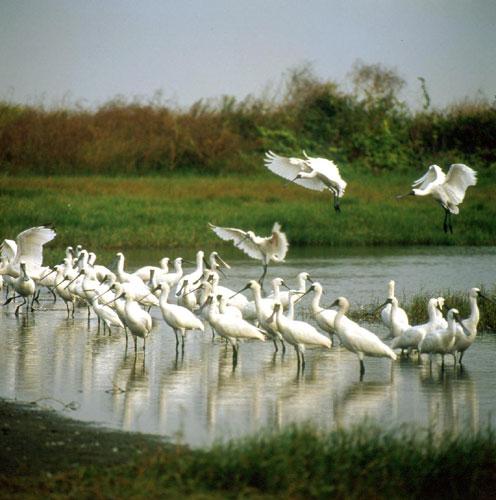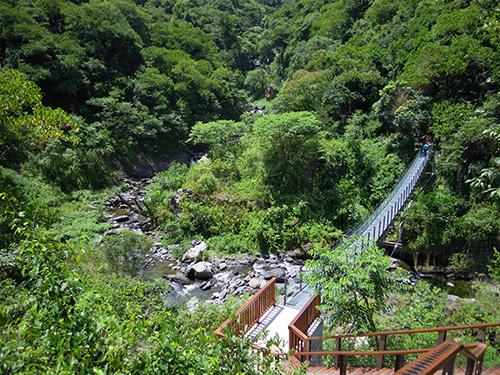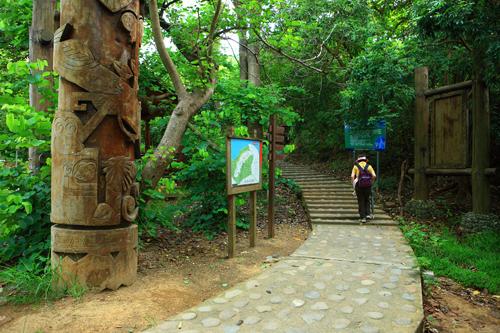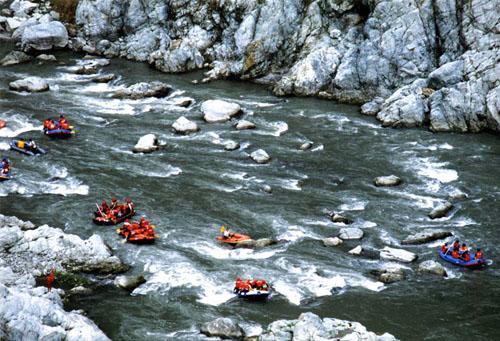Though Taiwan is an island country only somewhat larger than the state of Maryland, its mountains and history make for a land of variety, be it in terms of culture or the natural riches found across its 14,000 square miles.
The county of Hualien, lying on the island’s east coast, is pleasantly removed from the bustling urban jungles of Taipei, the capital, and other modern cities lining Taiwan’s western face.
The hospitality offered by its well-developed service industry, combined with picturesque landscapes and preserved traces of Taiwan’s Chinese, Japanese, and aboriginal legacies, make Hualien ideal for the vacationer looking for a rustic yet accessible getaway.

The ‘Marble Gorge’
At the center of the county is the city of Hualien, with a population of about 100,000. This town is best navigated by foot or on scooters, which can be rented cheaply. From Taipei, Hualien is accessible by regional and express trains. Domestic flights take travelers from the capital to Hualien in about half an hour.
Hualien is home to fine scenery, with the 19-kilometer-long (about 12 miles) Taroko Gorge and associated national park situated to the city’s north. Numerous hiking routes and an ancient temple adorn the premises, while the marble that gives the gorge its nickname reflects eons of tectonic compression between continental plates.

Away from Taroko, the Two Lakes Bikeway is an ideal and refreshing way to explore a 22-mile stretch of the eastern Taiwanese shoreline. Between the black-pebbled sands at the Qixingtan beach at the north end and the carp of Liyu lake at the south end are dozens of local attractions. Bikes can be rented at multiple points along the way.
In the town of Ruisui, south of Hualien City, lies the Tropic of Cancer and a marker for this important navigational latitude. The township itself is home to several Japanese-inspired hot spring baths and is famous for its honey-fragrance black tea—one of the main local crops.
Aboriginal Rafting
Native Taiwanese, related to the peoples of Austronesian islands, have lived on the island for thousands of years, but today they make up only about two percent of the population. There are relatively more of them in Hualien, which is separated from the highly developed west by the island’s prominent mountain range.
Prominent in Hualien in particular are the Amis people, Taiwan’s largest native group. For between $24 and about $100 a person, visitors can take guided tours of the Kiwit Amis community in the mountains of the Ruisui township.

Before 1987, there were no roads to Kiwit, and goods had to be brought and sent to the town on canoes via the Xiuguluan River. Now, the rapids are known for a 14-mile rafting route that finishes close to where the river empties into the Pacific Ocean.
In the last decade, the Amis people of the Kiwit community have made efforts to share their once-suppressed culture with outsiders. From the Ruisui Rafting Visitor Center, you can take a rafting tour that highlights the traditional ways of the indigenous folk, from shrimp trapping to cooking with heated porous stones called “maifan.”
Fish are a central part of the tribe’s diet, and have been part of an annual rite in which men up to age 40 stay at the riverbank for four days to hone their skills in a variety of tasks passed down from their ancestors.
It was in these trying environments that the natives developed their unique stone hotpot. The heated maifan are placed in a container made from a durable nut plant, in which the water is boiled and the meal prepared, before being served piping hot to the hungry fishermen.






Friends Read Free